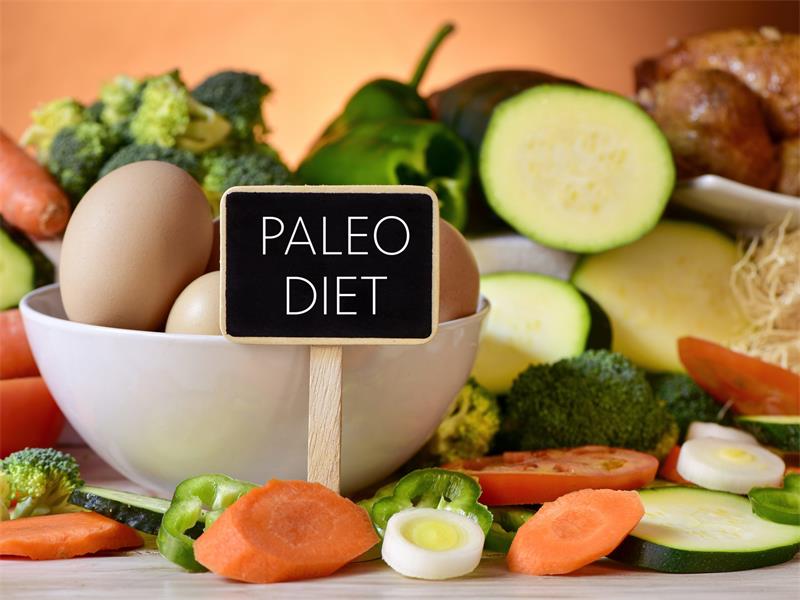Contents
Introduction
Are you tired of constantly counting calories and struggling to lose weight? Have you considered trying the Paleo Diet?
This dietary approach has gained popularity in recent years, with many people claiming significant health benefits from following it. However, like any popular diet, it also has its share of controversy.
What is the Paleo Diet?
The Paleo Diet is a dietary approach based on the idea that we should eat like our caveman ancestors did. The basic principle behind this diet is that we should only consume foods that were available before modern agriculture and processing methods existed. This means avoiding processed foods and focusing on whole, natural foods such as meats, fruits, vegetables, nuts, and seeds.
Popularity and Controversy
The popularity of the Paleo Diet can be attributed to its association with improved health markers such as weight loss and blood sugar control. However, there are also concerns about its long-term sustainability and potential nutrient deficiencies.
Some critics argue that the premise of eating like our ancestors is flawed since our modern-day lifestyles are vastly different from theirs. Despite these debates, many individuals have seen positive results from following the Paleo Diet.
It’s important to remember that every individual’s dietary needs are different, so what works for one person may not work for another. Before starting any new diet or making significant changes to your eating habits, always consult with a healthcare professional to ensure it’s safe for you.
The Basics of the Paleo Diet
The Paleo diet, also known as the “caveman” diet, is based on the idea that our ancestors ate a specific diet and that we should too. The premise is that our bodies are better suited to eating the types of foods they ate during the Paleolithic era, which was over 10,000 years ago. This means avoiding processed foods and focusing on whole foods that are nutrient-dense.
The basic principles of the Paleo diet are simple: eat whole, real foods and avoid processed or artificial ingredients. This means eating meat, fish, eggs, vegetables, fruits, nuts and seeds.
Foods that are not allowed on the Paleo diet include dairy products (except for grass-fed butter), grains (including wheat and corn), legumes (such as beans and lentils), refined sugars (like table sugar) and processed oils. One of the main benefits of this type of eating is that it can help reduce inflammation in the body.
Inflammation is linked to various diseases such as heart disease, cancer, diabetes and obesity. By eliminating processed foods from your diet you can reduce inflammation in your gut which can lead to improved digestion and absorption of nutrients.
Allowed Foods
There are a variety of delicious whole foods allowed on the Paleo diet. These include grass-fed meats such as beef, pork or lamb; wild-caught fish; free-range poultry; eggs from pastured chickens; fresh fruits like berries or apples; vegetables like leafy greens or broccoli; nuts such as almonds or cashews; seeds like chia or flaxseeds; healthy fats such as coconut oil or olive oil.
Meat is a staple on this type of diet because it provides essential amino acids for muscle growth and repair. It’s important to choose grass-fed meats whenever possible because they contain more nutrients than grain-fed animals.
Fruits and vegetables provide essential vitamins, minerals and fiber. Leafy greens are one of the most nutrient-dense foods available, packed with Vitamin K, calcium and antioxidants.
Prohibited Foods
While there are many delicious foods allowed on the Paleo diet, there are also some foods that should be avoided. Grains are one of the main prohibited foods because they contain lectins which can be difficult for some people to digest. Legumes like beans and lentils contain phytic acid which can interfere with nutrient absorption.
Processed foods such as candy, soda and fast food should also be avoided on the Paleo diet. These types of foods contain high levels of refined sugars which can lead to weight gain and other health problems.
The Paleo diet is based on eating whole, real foods while avoiding processed or artificial ingredients. By eating this way you can reduce inflammation in your body and improve your overall health.
Benefits of the Paleo Diet
Lose Weight and Improve Health Markers
One of the biggest benefits of the Paleo diet is weight loss. The diet encourages the consumption of whole foods and cuts out processed junk food, which can lead to weight loss naturally.
Additionally, many people experience improved health markers such as lower blood pressure, cholesterol, and blood sugar levels when following a Paleo diet. In fact, a study published in the Journal of Diabetes Science and Technology found that after following a Paleo diet for 12 weeks, participants saw significant improvements in their blood sugar control.
Reduce Inflammation
Inflammation is a natural response to injury or infection but chronic inflammation has been linked to several diseases including heart disease, cancer, and Alzheimer’s. Research suggests that the Paleo diet may reduce inflammation levels by promoting foods that are anti-inflammatory such as fruits, vegetables, nuts/seeds, and healthy fats like avocado oil or olive oil, etc. On the other side, it discourages foods that are pro-inflammatory like sugar-added beverages or refined carbohydrates.
Improved Digestion
The elimination of processed foods from a person’s diet can also lead to better digestion on a Paleo diet. By cutting out dairy and gluten-containing grains (which are common irritants for many people), gut health may improve which aids digestion overall.
Moreover, the addition of fiber-rich fruits and vegetables further provides help in maintaining proper bowel movements. it shows that there are several benefits associated with following a Paleo Diet such as weight loss due to wholesome food sources along with improved overall health markers like optimum lipid profile whereas it also shows promise towards reducing inflammation levels which have links towards chronic diseases like heart disease or cancer which ultimately leads towards longer lifespan expectancy along with solid digestive tract functioning due to limited consumption of processed foods, especially those containing gluten/lactose etc.
Drawbacks of the Paleo Diet
Difficult to Follow Long-Term
While the Paleo diet may seem appealing to some, it can be difficult to follow long-term for a few reasons. One reason is that it requires significant food preparation and planning, which can be challenging for those with busy lifestyles.
The diet also restricts certain foods that may be hard to give up, such as grains and dairy products. Additionally, it can be expensive to maintain a Paleo diet since it requires high-quality meats and organic produce.
Another issue with the Paleo diet is its lack of flexibility. The strict guidelines of the diet make it difficult for individuals to enjoy meals with friends and family or eat out at restaurants without feeling restricted or having to explain their dietary needs.
May Not Provide Enough Nutrients for Certain Individuals
While the Paleo diet emphasizes whole, nutrient-dense foods such as fruits, vegetables, lean meats, nuts and seeds; some individuals may not get all the necessary nutrients they need through this way of eating. For example, those who follow a strict Paleo diet may not get enough calcium since dairy is excluded from the plan. Additionally, vegetarians or vegans who try a modified version of the plan may not get enough protein either since legumes are also prohibited.
It’s important for anyone considering the Paleo diet to speak with their healthcare provider first in order to ensure that they are getting proper nutrition while following this way of eating. It’s also important for individuals who experience any negative side effects on this type of eating regimen to consider other options that will support their health goals.
The Role of Protein in a Paleo Diet
When it comes to the Paleo diet, protein is perhaps one of the most important components. The idea behind the diet is that you eat like our ancestors did, meaning that you’re consuming foods that are high in protein and low in carbohydrates. This makes sense when you consider that our ancient ancestors were often hunters and gatherers, relying heavily on meat to survive.
One of the benefits of a high-protein diet is that it can help promote satiety. Protein takes longer to digest than carbohydrates or fats, which means that you’ll feel fuller for longer after eating a high-protein meal.
Additionally, protein is essential for building and repairing muscle tissue, making it an important nutrient for athletes or individuals who are looking to build muscle. However, there are also some potential drawbacks to consuming too much protein on a Paleo diet.
For example, if you’re not careful about the types of meats you consume (e.g., processed meats), you could end up consuming too much-saturated fat or sodium. Additionally, if you’re not balancing your protein intake with enough fruits and vegetables (which are encouraged on the Paleo diet), then you could be missing out on other important nutrients like fiber and antioxidants.
How to Properly Balance Macronutrients on a Paleo Diet
While the Paleo diet encourages eating whole foods like meat, fruits, vegetables, nuts and seeds – it can be difficult to know how much of each macronutrient (protein, fat and carbs) one should consume per day. One way to approach this is by following what’s known as “macro counting”. This involves tracking your daily intake of macronutrients using an app or website like MyFitnessPal.
To maintain a balanced ratio while following a paleo meal plan; aim for 30% carbohydrates; 40% protein; 30% fats. Another approach is to focus on intuitive eating.
This means listening to your body’s hunger cues and eating when you’re hungry, stopping when you’re full. It’s important to remember that everyone’s nutritional needs are different, so what works for one person might not work for another.
The Impact of a Paleo Diet on Athletic Performance
For athletes, the Paleo diet can be a mixed bag of results. On the one hand, the high-protein content of the diet can help build and repair muscle tissue faster. Additionally, since the foods on the Paleo diet are generally nutrient-dense and whole foods – they can help boost energy levels.
On the other hand, some athletes may find that they need more carbohydrates in their diets to maintain their energy levels during workouts or competitions. Additionally, since the Paleo diet restricts certain foods like grains and legumes – athletes may find it challenging to get enough fiber or specific vitamins such as calcium or vitamin D that have been shown to improve bone health.
Ultimately; whether an athlete should follow a paleo-style meal plan depends on factors such as the type of sport played; intensity level; training frequency and personal preference. As with any major dietary changes; those looking to adopt a paleo lifestyle should consult with an accredited sports nutritionist or healthcare professional prior to starting.
Conclusion
The Good and the Bad
Overall, the Paleo diet has been touted as a healthy and effective way to improve overall health markers and lose weight. The focus on whole foods that are nutrient-dense, high in protein, and low in refined carbohydrates can help reduce inflammation, lower blood sugar levels, and lead to improved digestion. However, it’s important to note that the diet may not be suitable for everyone due to its strict rules on certain food groups.
One of the positives of the Paleo diet is its emphasis on reducing processed foods. This can help people eliminate unhealthy additives and preservatives from their diets while eating more natural foods.
The diet also encourages lean protein sources like grass-fed beef or wild-caught fish which can be beneficial for gaining muscle mass or supporting athletic performance. On the other hand, there are some drawbacks to consider before adopting a Paleo lifestyle.
Cutting out entire food groups like dairy and legumes can lead to deficiencies in essential nutrients like calcium and fiber. Additionally, following such strict dietary guidelines may not be sustainable long-term for some individuals.
Consult with Your Healthcare Provider
Before embarking on any new dietary regimen or making significant changes to your current diet, it’s always important to consult with your healthcare provider first. They can help determine if a certain diet is appropriate for your individual needs based on factors such as medical history, current medications or treatments you are undergoing, allergies or intolerances you may have.
Ultimately, while there are benefits to following a Paleo-style eating plan for some individuals who thrive on high-protein meals with minimal carbohydrates from non-processed sources such as fruits rather than grains; others may find it difficult or unsustainable long-term due to its strict guidelines. By consulting with your healthcare provider first before making any drastic changes in how you eat; you’ll be better equipped to make informed decisions regarding what’s best for your overall health and wellness in the long run.












